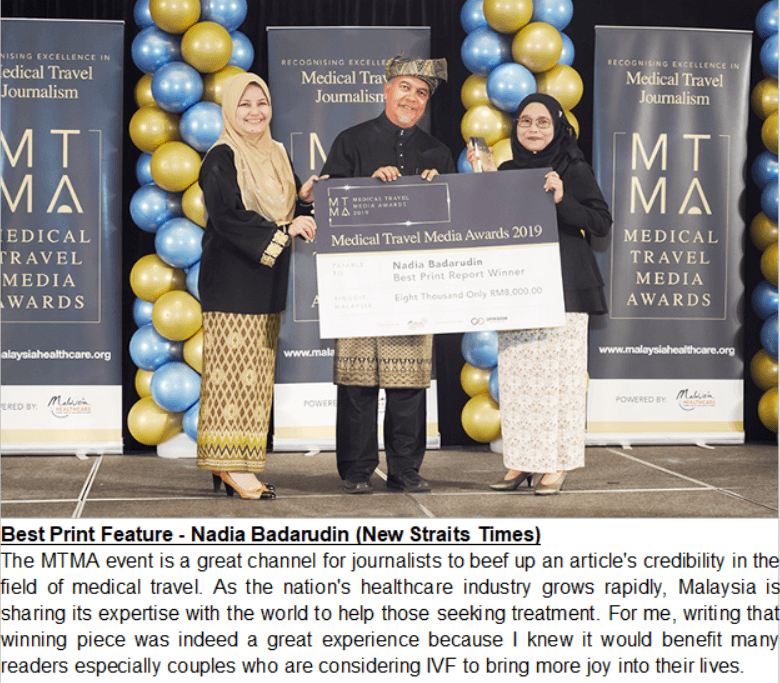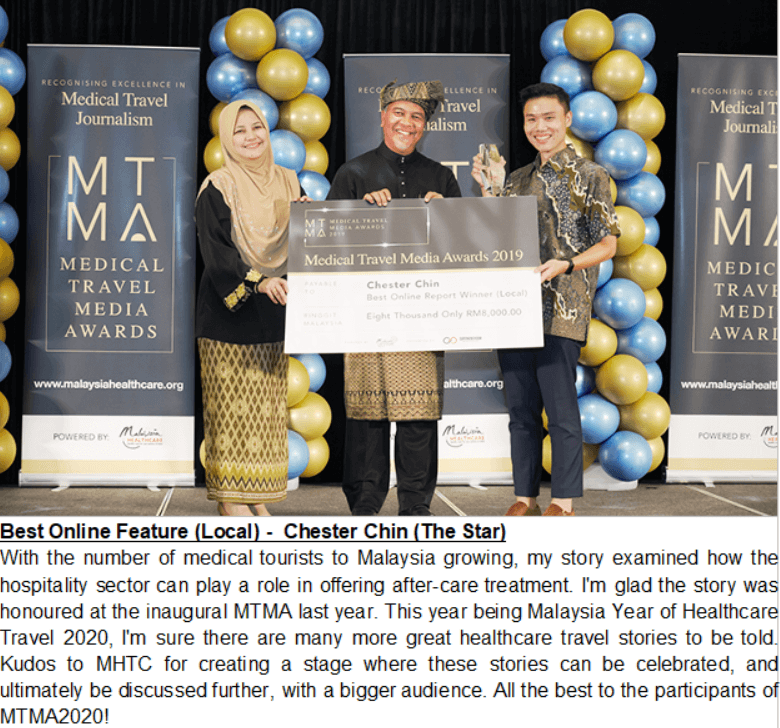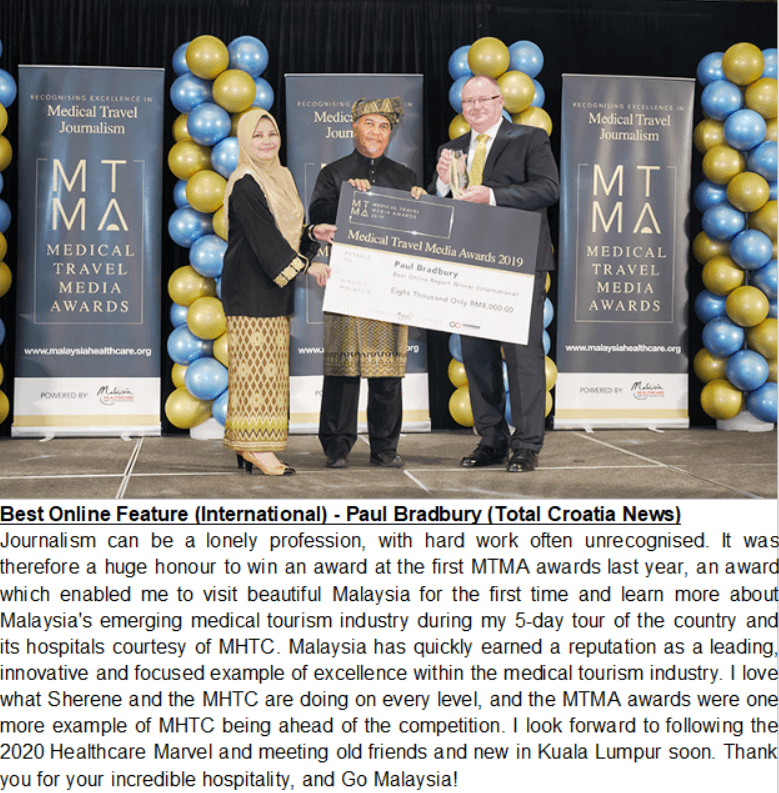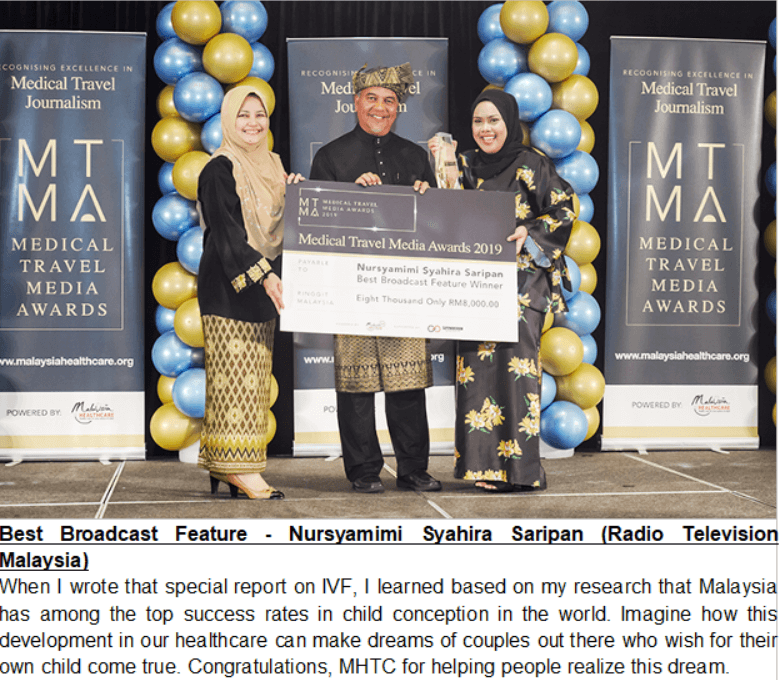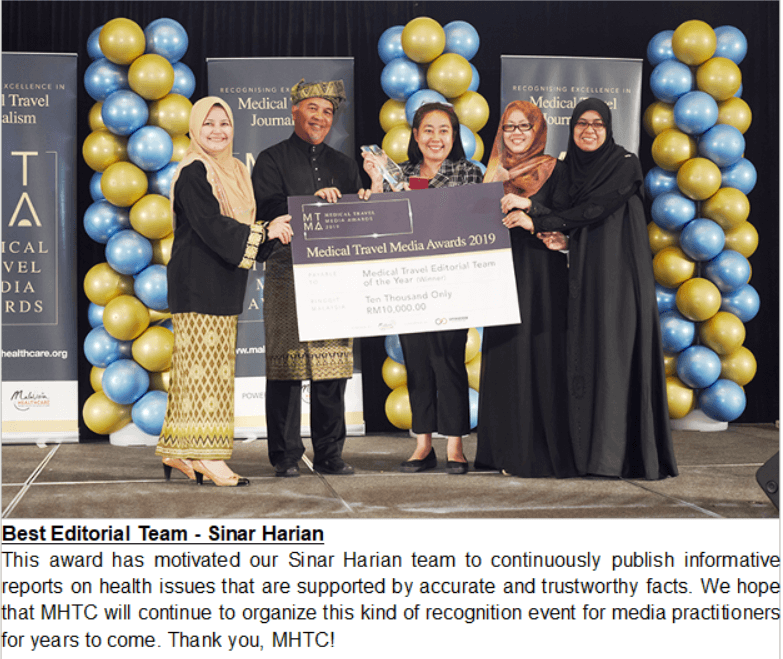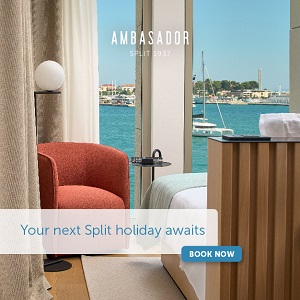IMF: Croatia's Economy Has Performed Well
ZAGREB, Feb 20, 2020 - Croatia's economy has performed well, but convergence with the EU needs to accelerate, hard-won fiscal gains are fragile and should be carefully preserved, and a more dynamic state is vital for future economic prospects, are some of the assessments of the International Monetary Fund (IMF)
The Executive Board of the International Monetary Fund (IMF) concluded the IMF Article IV consultation with Croatia at the end of last week, and a press release and a comprehensive report by the IMF Mission were published at the IMF website on Wednesday.
The IMF Mission visited Croatia from 3 to 16 December last year within the framework of yearly consultations with member states, and they published their final statement at the end of their visit.
In a press release published today, the Executive board emphasised that Croatia experienced its fifth consecutive year of solid economic growth, once again driven largely by private consumption and tourism. The economic growth is expected to moderate, the says the IMF adding that both public and external indebtedness are due "to continue their declining trajectories."
"The pace of fiscal consolidation in 2019 continued to slow, with the budget estimated to be close to balance. Recently agreed wage increases in the public sector are expected to increase current spending in 2020. Even though revenues will remain buoyed by economic activity, the budget balance is expected to turn into a small deficit in 2020, in part due to additional tax cuts," it was stated in the IMF Executive Board's press release, where it was also noted that contingent liabilities could also pressure budget balances in the coming years.
The IMF Executive Board also noted that Croatia was currently targeting ERM II entry in mid-2020, and eventually the Euro Area.
The Executive Board stressed that the Croatian economy had performed well, but convergence with the EU needed to accelerate.
"The Croatian economy has become stronger over the last five years. This is significantly because of strong budget management and skilful policies by the Central Bank. As a result, public debt has fallen along with interest rates, creating room for a robust consumption-led private sector expansion," the IMF stated.
The Fund's experts assess that unemployment was down, wages were growing, and inflation remained subdued.
"Yet, Croatia has barely reduced its distance with the EU average in terms of income per capita in the last decade, and emigration of the young continues to pose challenges."
The IMF Executive Board also assessed that "hard-won fiscal gains are fragile and should be carefully preserved".
"While public debt ratios continue to decline due to buoyant activity, fiscal performance has recently become encumbered by numerous spending demands," stated the IMF, adding that for this reason, the members of the IMF Mission support the Croatian government’s decision to withhold the planned reduction in the overall VAT rate.
The IMF Executive Board also assessed that "a more dynamic state is vital for future economic prospects".
"The budget is currently too rigid and losing its capacity to spark economic growth," emphasised the IMF.
"Better absorption of EU funds could ease this shift in priorities but cannot substitute for deeper reforms to the cost structure of public administration, pensions and healthcare systems, and the fiscal and territorial relationships between different levels of government," accentuated the IMF.
They also point out that state-owned enterprise management and performance needs more modernization and that "accelerating the digitalisation of public administration and using technological improvements to better target social-benefits would also help make the state more dynamic".
The Executive Board also evaluates that "renovating the capital stock and enhancing the business climate will help raise potential growth".
They also noted that recent improvements in streamlining the administrative and fiscal burdens on the business sector were welcome, but that members of the Mission also encouraged further progress in the areas of enhancing digital public services and adapting legislation to facilitate Croatia’s integration in the EU’s Digital Single Market.
More economy news can be found in the Business section.
Neglected Kanfanar - Rovinj Railway to be Given New Life as Hiking and Cycling Trail
February 20, 2020 - This conceptual design transforms the Kanafar - Rovinj railway into bicycle-pedestrian infrastructure of great potential, which should connect the coast and the interior and, among other things, offer innovative and modern tourist facilities, relieve road traffic from cyclists, preserve the route and add accompanying technical and construction facilities as valuable industrial heritage.
Glas Istre reports that the conceptual design for the reconstruction and redevelopment of the old and abandoned Kanfanar - Rovinj railway line, which is 22 kilometers long, aroused great interest from those who had the opportunity to learn about the new project first-hand on Tuesday.
The authors of the preliminary design, landscape architect Marko Sošić, the head of the Studio "Kappo" and Dr. Ivana Venier, provided explanations and answers to the questions of those present.
According to Ivana Venier, the basic goal of the preliminary design was to remodel the former railway line into a bicycle and pedestrian path.
“It is an abandoned and neglected railway infrastructure of exceptional potential, which this conceptual solution is looking to transform into cycling and pedestrian infrastructure, also of exceptional potential, which should connect the coast and the continent, ie, Kanfanar and Rovinj. It will offer innovative and modern tourist facilities, unburden the road traffic from cyclists, preserve the route and add accompanying technical and construction facilities as a valuable heritage of industrial heritage, and encourage the broad development of the local community,” Venier said, and added that the solution presented covers the entire route from station to station in order to ensure continuity and preserve the historical memory of the area.
In addition, Venier added, rebuilding the railroad is one way of revitalizing an area that is of utmost importance to the locals.
“The main goal is to turn the abandoned and neglected track into an attractive space on a bicycle path that will affect the development of a wider area. Revitalizing the route and turning it into a bike path will give it various purposes: sports, recreational, cultural and traffic. In addition, the bike path will connect villages and settlements, and will be useful for promoting intermodality as a healthy and sustainable way of movement, preserving natural, cultural and industrial heritage as well as developing complementary activities such as cycling,” she explained.
Marko Sošić explained more about the conceptual design and explained that at the very beginning of the project, the biggest challenge was to identify and analyze the existing condition of the route, which again consists of different situations on the ground - large stone embankments, ravines, and bridges to parts where the majority of the railroad no longer exists. For this reason, the solution worked according to typical situations that included three main typologies: paths in the field, on the embankment and in the ravines,” said Sošić, who added that due to length, and because of the finances, the renovation and conversion of railways must be phased in order of importance.
“The first objective includes breaking up cycling tourism, followed by the local development of complementary activities, the preservation of natural, cultural and industrial heritage, and finally the development of intermodality and the promotion of sustainable mobility,” Sošić said.
Talking about the construction action plan, which will also go gradually and in stages, they would begin by cleaning the railway, which, as we learned from the Kanfanar Mayor Sandra Jurman, has already started. Then, they would construct a macadam road, pave the asphalt, create the lookouts and erect wooden sculptures.
Speaking about the attractions that could be found on the newly refurbished railway line, whose construction, in addition to the money from the budget of Kanfanar and Rovinj, will require EU funds, Sosic said they would construct a bridge over Ipsilon, erect a historic train as a sculpture, renovate three existing bridges, construct a resting place in Rovinj and Kanfanar with a bicycle stand and an electric charging station for them. In addition, the new path will provide space for new lookouts, parking lots, newly planned bridges, and horizontal signage as an opportunity to place installations and sculptures.
According to Jurman, it is a large and financially demanding investment that will ultimately connect Kanfanar and Rovinj even more significantly, enriching the lives of both the local population and the increasing number of cyclotourists and tourists in general.
“At this point, it is very difficult to talk about specific dates of project implementation. What follows is the creation of a survey that will be followed by the main project. In addition to money from the municipal and city budgets, we will also apply for funds from the EU Fund and the development of tourism infrastructure. In any case, I hope that by next season this route will be able to be used by pedestrians,” Jurman said.
To read more about travel in Croatia, follow TCN's dedicated page.
VIDEO: Zlatko Dalic and Mateo Kovacic Announce EURO 2020
February. 20, 2020 - In October 2017, Zlatko Dalic was named coach of the Croatia national football team. At the 2018 World Cup in Russia, he took Modric & Co. to the World Cup final. Now, he’s leading the team through the next major International competition - EURO 2020.
The European Football Federation (UEFA) presented the Croatia national team in a video ahead of EURO 2020, featuring coach Zlatko Dalic and midfielder Mateo Kovacic.
“A lot of things have changed. It’s completely different from working at a club. I’m working for my national team, my country. That is what is truly priceless for me,” said Croatia coach Zlatko Dalic at the start of the video, and continued:
“We’ve had an amazing time and we’ve done well again. The situation wasn’t great when I came here. There were a lot of divisions and negativity surrounding the national team. We played matches in empty stadiums. There were fines and problems with our fans. Now whenever we play, the whole country stops and watches. For me, that’s the most important thing. The Croatia national team has finally returned to its people.”
Mateo Kovacic was also interviewed in the video.
“Our coach is a very calm man. He is leading Croatia in the right direction, exactly as it should be. He’s making good, intelligent decisions, and I hope it continues like that,” Kovacic said, and Zlatko Dalic added:
“I didn’t get here by chance. I worked hard for 12 years, I got some good results. I built my name, built my career. What we are now achieving makes these years the best of my career.”
“In Euro 2008 and 2012 we had big opportunities and in 2016 we conceded in the last minuteagainst Portugal. Bad luck followed us for years, but it led to the incredible high of 2018. Hopefully we’ll have more of those experiences,” said Kovacic.
"We must have quality, be persistent, work hard and be aware that we have got results as a team, not by standing out as individuals. That’s what’s important. I know we will be under pressure but we are used to that," Dalic concluded.
To read more about sport, follow TCN’s dedicated page.
A Foreign Eye Behind the Scenes at Croatian President Milanovic Inauguration
February 20 - A look behind the scenes at the Zoran Milanovic inauguration of the office of the Croatian Presidency through the eyes of one of the few foreigners to attend.
As I had never been to the Presidential compound on Pantovcak, I thought I would try and take advantage of the Zoran Milanovic inauguration to see the place, as well as to observe the swearing in ceremony up close. It was bound to be a rather curious affair, given the tension between the SDP man and the HDZ government, who would be in attendance. And the fact that Milanovic decided against a big event with just 39 guests reportedly invited, as well as a rather unusual choice of singer for the National Anthem meant that it could be quite an event. I am very grateful to official spokesman Nikola Jelic for arranging two press passes for myself and colleague Forrest - everything was swiftly and smoothly arranged.
We were instructed to report to Pantovcak 281 between 09:00 and 11:00 to process the press accreditation, with the ceremony due to start at midday. My faithful Varazdin chauffeur dropped me in plenty of time, and I switched vehicles to be transported to the location of the ceremony.
Initially I thought that the reason for the transfer was due to the rain, but then I got to understand the size of the presidential grounds. It is HUGE. Not the greatest filming in history, but here is the drive from the gate to where the ceremony took place. Incredibly beautiful and peaceful, although the chap in charge of picking up leaves has his work cut out.
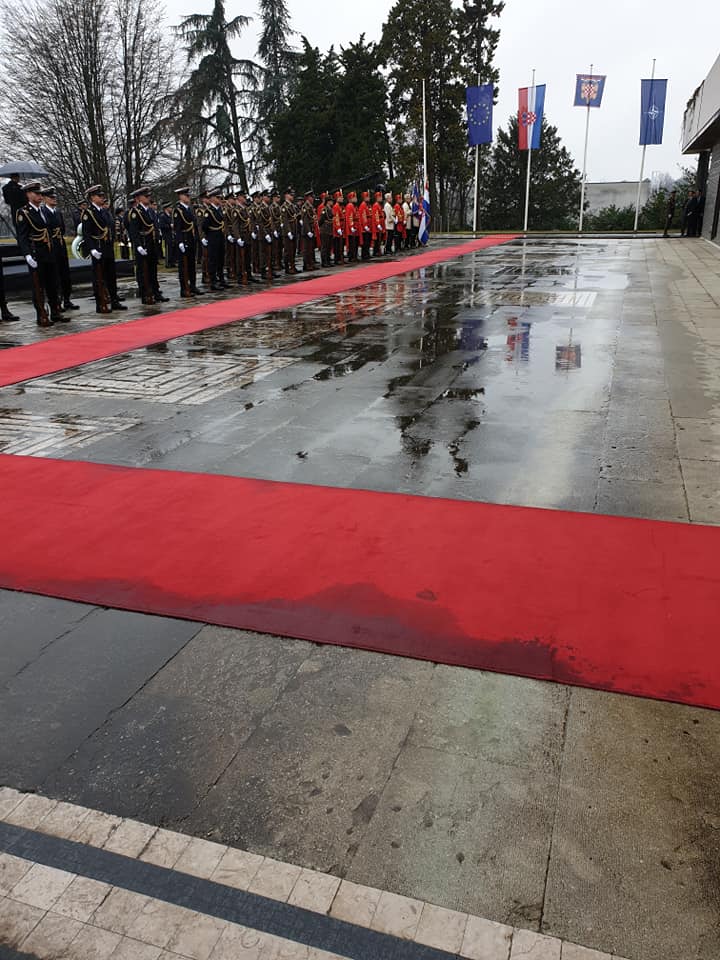
It was WET.
Although it was going to be a low-key affair (apparently it cost six times less than Kolinda's inauguration), I had been expecting a little more life than this - the video above was taken 30 minutes before kick off.
I had no idea what to expect in terms of media access, and I was a bit surprised to learn that for the ceremony itself, we would all be in the room next door watching events on television screens. Having enjoyed the fabulous hospitality for the press at the opening night of Rijeka 2020 recently, it was also a surprise to see the contrast at the inauguration. When I rocked up in the press room at about 11:30, I saw evidence of a few coffees, but there were no refreshments whatsoever. Not a problem for me, but a little surprising. Although we could not go into the room for the ceremony, we were allowed in a little before - see video above.
And we were free to roam around some parts of the building - busts of some prominent Croats on display.
Both Milanovic and Prime Minister Plenkovic were dropped directly by the entrance, and it was only outgoing President Kolinda Grabar-Kitarovic who walked the red carpet past the ceremonial guards. Her arrival is in the video above.
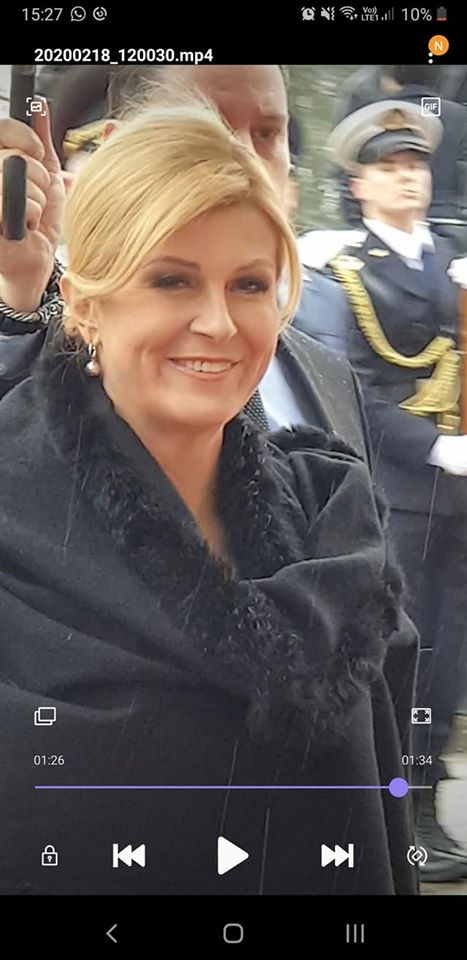
I have never met Kolinda (her office rejected a request for a TCN interview a couple of years ago), but she has now smiled at me twice in my life. The first time was at Spancirfest in Varazdin in 2016 when I ran along a hill to get in position to take her photo, slipped, fell and rolled down to land almost at her feet. It was one of the highlights of my less than distinguished journalistic career. And she was probably not smiling at me when she walked past, but it felt like it. Although I am not a fan personally, she conducted herself with dignity on what must have been a very difficult and emotional day for her.
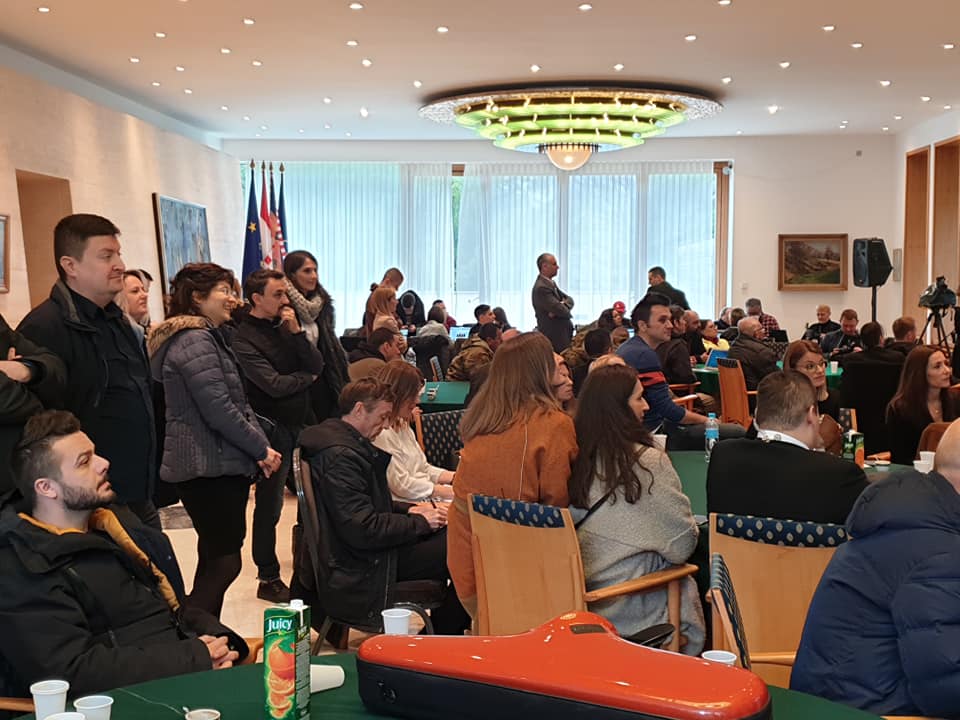
The press room, with the Milanovic inauguration taking place behind us.
There is not much point me commenting on the inauguration itself, as I saw it the same as everyone else - on television - albeit with the added bonus of a sea of cynical comments from the assembled national media.
And there was one major talking point. My views on the rendition of the national anthem by Croatian icon Josipa Lisac are unimportant, and the subject has been covered at length in the Croatian media already. But check it out in full above.
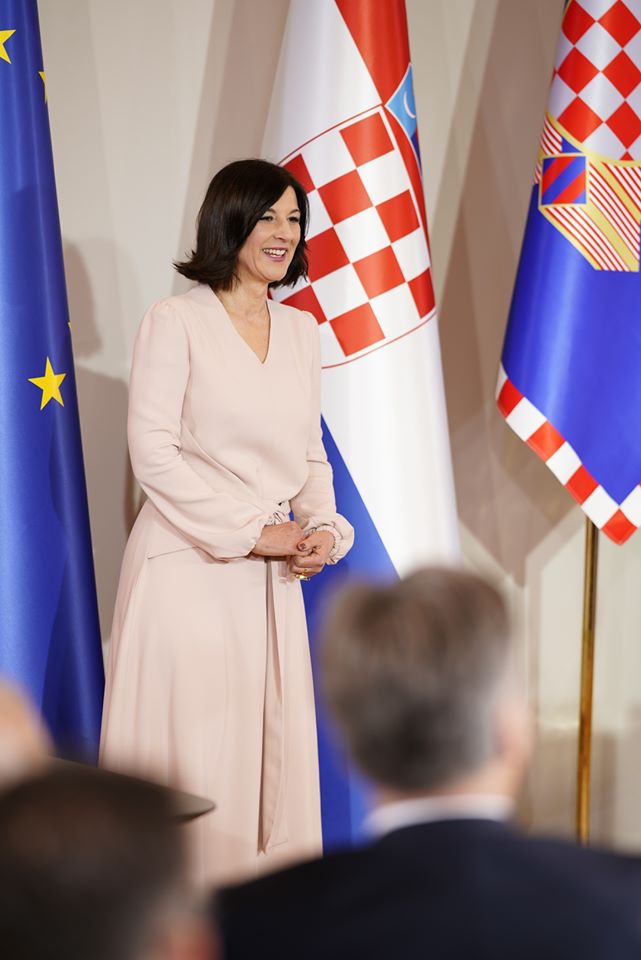
There was another female star at the ceremony, First Lady Sanja Milanovic, and it was great to see her promoting Croatian fashion and excellence with her outfit from Varteks.
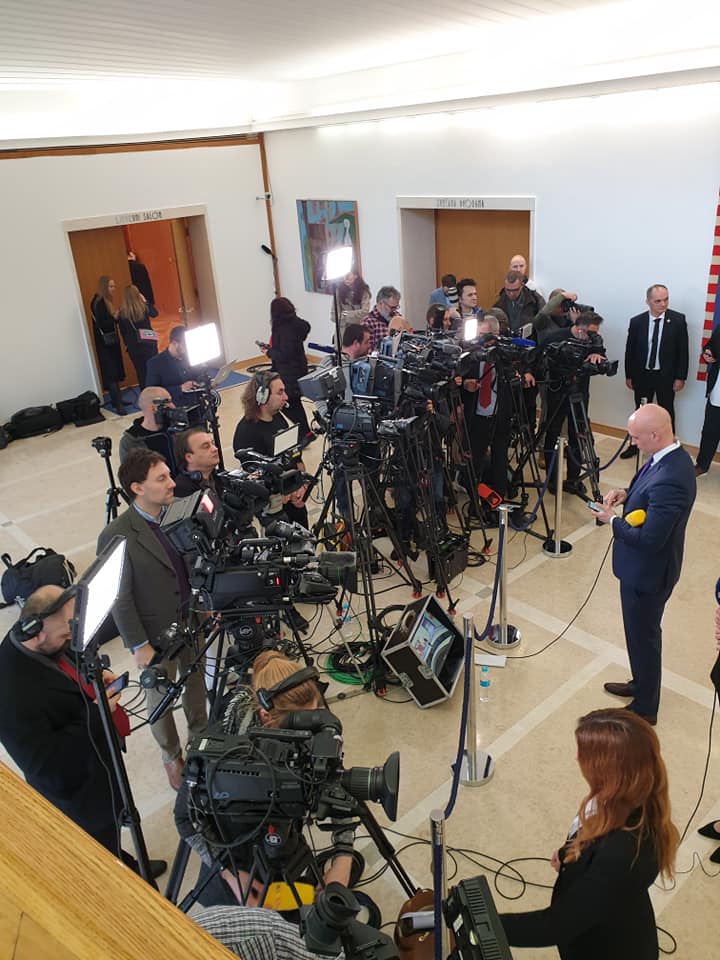
And after the ceremony, we waited in the hallway for a chance of a photograph, an interview. I was very impressed with how civil and polite members of the media were towards each other. No pushing, checking that views were not obstructed. Much more civilised than I had been expecting. A liaison lady took requests from journalists as to who they would like to interview, and then she went into the ceremony room and brought those who agreed to appear for the cameras.
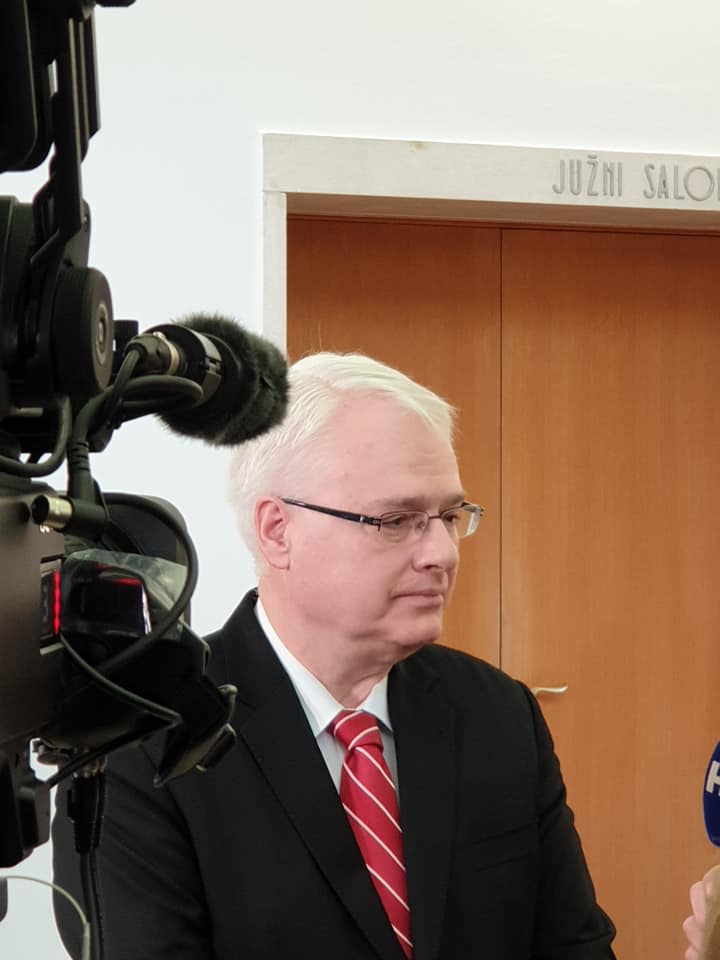
Former President Ivo Josipovic (who unlike Kolinda, did agree to my interview request) was one of the first out.
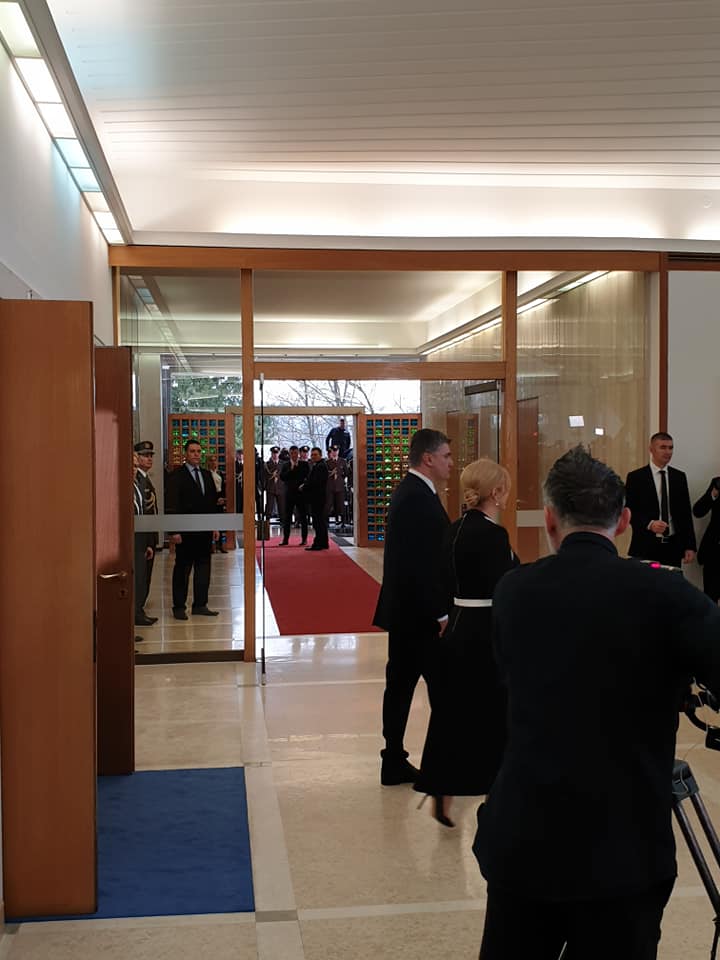
And then they were there. Like an estranged couple who had been married for years but no longer had anything in common, the doors opened and the two presidents emerged and climbed the stairs for a short meeting. The campaign was brutal, and there is clearly no love lost between them, but protocol was adhered to. Thinking about it, the room was filled with key members of the HDZ government who are opposed to Milanovic in general - I wonder how many friends and allies were among the 39 guests.
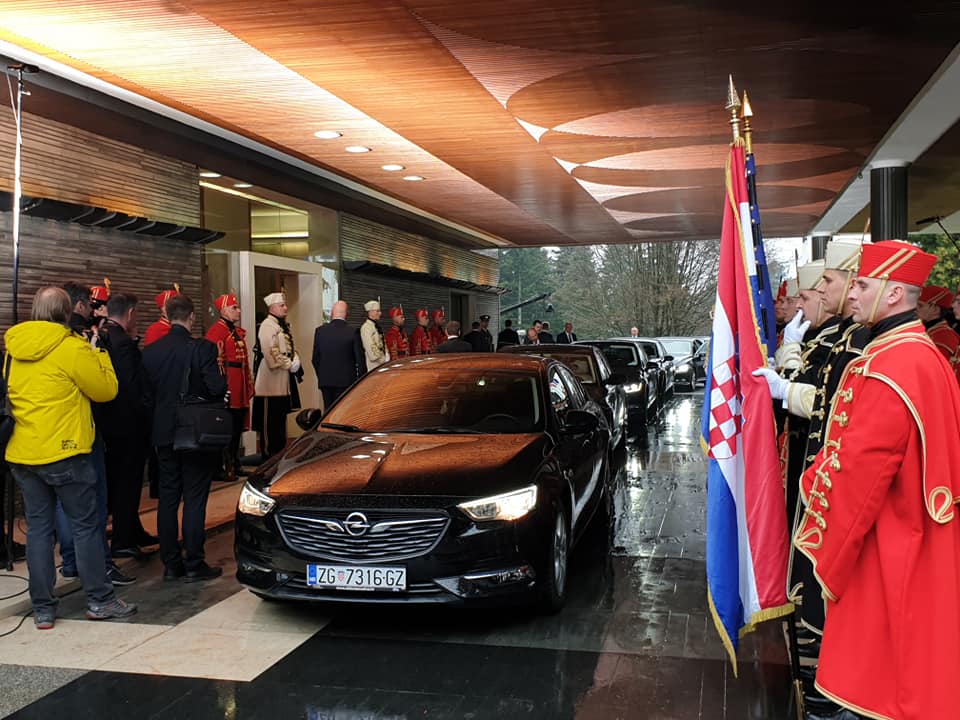
I was a little surprised not to receive a programme of the day's schedule with the press accreditation, but I soon learned why. There simply was no progamme. There was less of an inauguration and more of a bureaucratic procedure. The black cars started to appear and the prominent guests took their leave. PM Plenkovic was one of the last to leave, at precisely 12:59, less than an hour from the start of the ceremony. Astonishing that such an event could be over so quickly, but I liked it in a way. My last editorial was called Would Croatia Be Better If Its Politicians Were Not Treated As Rock Stars? The Milanovic dour approach is certainly in stark contrast to the previous regime, and perhaps we can now focus on real issues.
Milanovic seems to have decided to downplay the role of the presidency, perhaps more in line with the reality of the importance of the office, after five years of Kolinda's style over substance. Whatever I think of his politics, I for one welcome that.
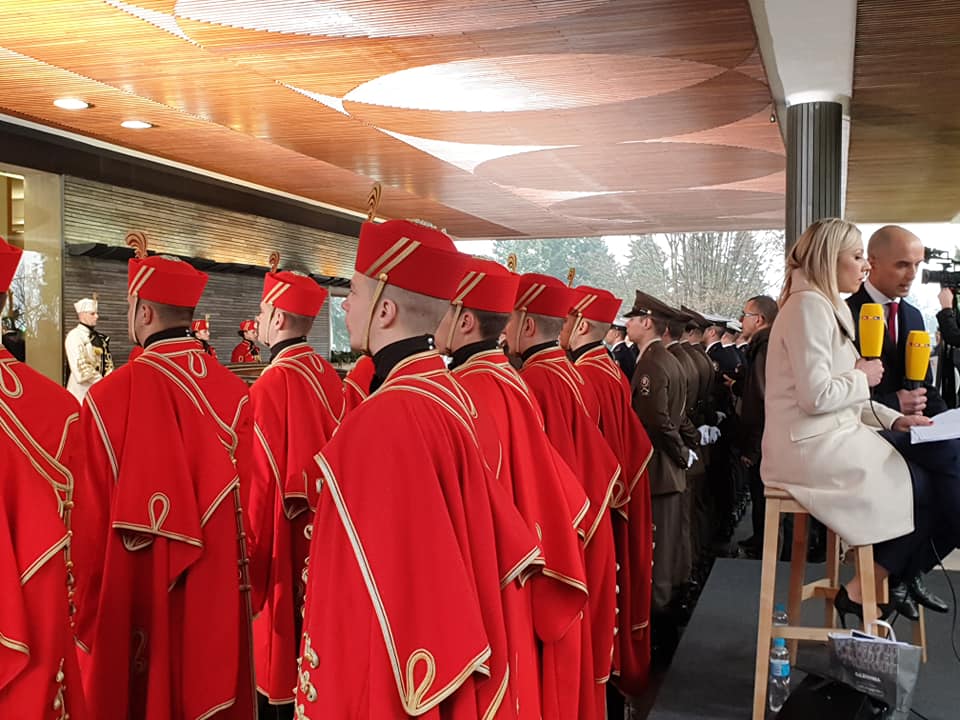
Being a first timer at such an event, I wasn't quite sure where to stand, and it was an education to watch the professionals set up shop for the best angles. This is how it looks behind the scenes.
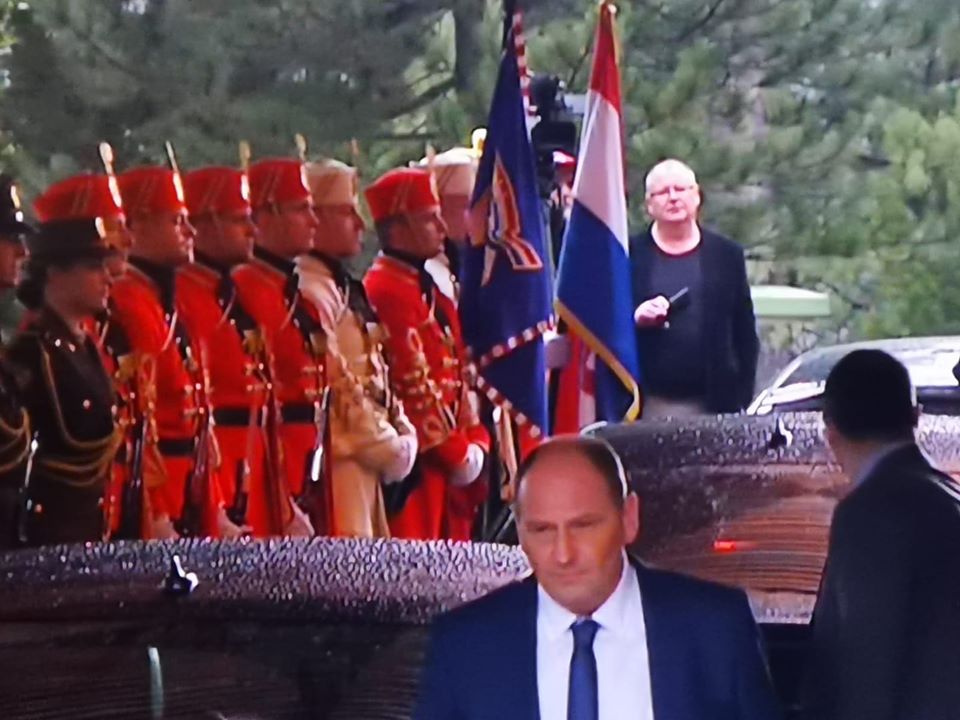
And of course I was standing in the wrong place, as I soon learned after my phone started beeping incessantly, with screenshots of live national television coverage such as the one above.
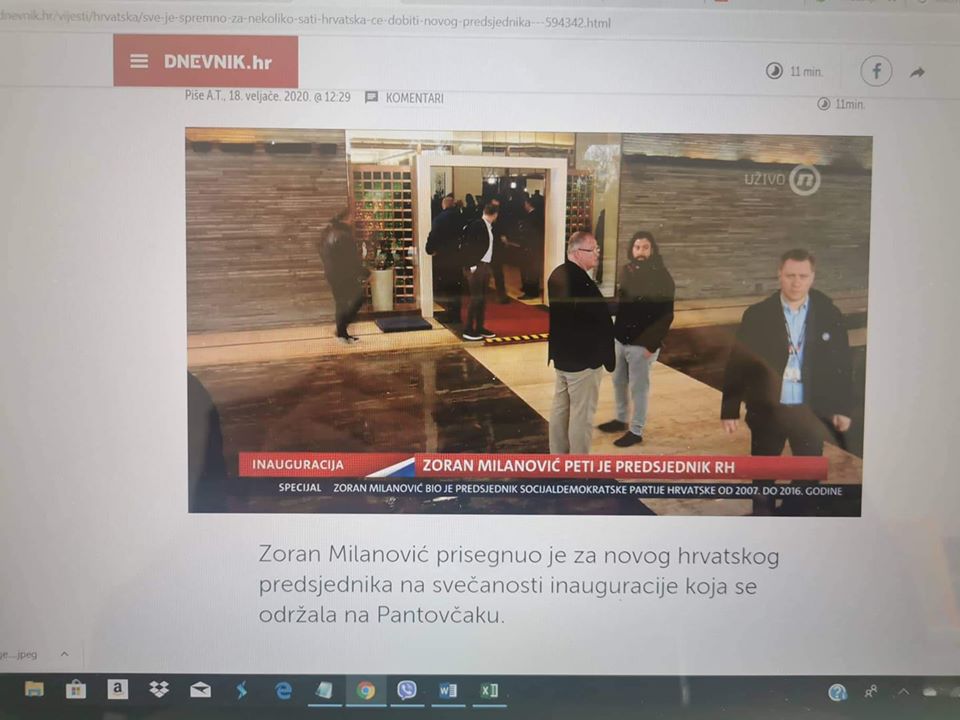
I could be wrong, but I think we might actually have been the only two foreigners at the Milanovic inauguration - great material for my faithful trolls who think I am the MI6 chief in the Balkans. It took some effort, but we managed to secure the building.
And then, perhaps the most poignant moment of all - the Kolinda farewell. President Milanovic walked former President Grabar-Kitarovic to her car, give her flowers, a kiss and a wave goodbye. Then he turned round and went back into his new home.
And that was the end of the party - time 13:15.
For a different TCN account of the Milanovic Inauguration, check out Forrest Stilin's Croatia President Inauguration: Gay Icon Eclipses Modest Event.
For the latest news about President Zoran Milanovic, follow the dedicated TCN section.
Coca-Cola Filming UEFA Euro 2020 Commercial in Croatia
Coca-Cola is filming a commercial in Croatia in the run up to Euro 2020, and some handsome earnings are on offer for extras.
As Poslovni Dnevnik writes on the 19th of February, 2020, the fact Istria and Pula have definitely confirmed their status as interesting film and marketing locations has been confirmed by the filming of an advertisement for one of the world's most famous beverages - Coca-Cola, which will be shot in locations in Pula next month, between March the 10th and the 12th, according to Glas Istre.
The entire production of this commercial in Croatia is led by Bas Production, which is already heavily involved in the project. The casting for extras will take place on February the 20th, and then again on Friday, February the 21st, from 10:00 to 13:30 and then from 15:30 to 19:00 (on both days) at the Forum Restaurant on the city square of the same name.
The organisers of the commercial in Croatia are looking for men and women between the ages of 20 and 45, of various looks, a woman over 65, and a middle-aged or older gentleman who is bald and with a mustache, with a Mediterranean appearance and a distinct personality. The organisers point out that it is advisable for the casting to be attended by people from Pula and Istria. This doesn't by any means mean that persons from faraway places cannot participate, but they should bear in mind that travel expenses for casting and filming aren't covered, nor are overnight stays or the use of accommodation during filming guaranteed by the production.
Those wishing to participate in the casting must register with their first and last name and indicate which day and at which time they wish to arrive at: This email address is being protected from spambots. You need JavaScript enabled to view it.. Selected extras should be available for costume rehearsal (March the 6th or 7th) and for recording for three days (March the 10th, 11th, and 12th).
As for the fees, this is a standard fee of around 250 kuna net per day of recording. For extras with roles, however, it is slightly higher, around 750 kuna net per day of shooting. This is an ideal opportunity for anyone who wants to see themselves on the big or small screen. It's also a free advertisement for Pula, which will be seen around the world in the midst of the most visible sporting event of the year.
Make sure to follow our dedicated lifestyle page for more.
Tax Free Model Working for Bjelovar, More Croatian Companies Opening
The continental Croatian city of Bjelovar is fast becoming a shining example of just what can be done with a little willpower and genuine desire for forward momentum, and other Croatian cities are following in its footsteps.
As Novac/Gradonacelnik.hr writes on the 19th of February, 2020, last year, 15,445 new companies were opened in the Republic of Croatia, 1178 more than were opened back in 2018. However, 10,814 enterprises were closed or deleted from court registers, 623 more than one year earlier.
This is evidenced by data from the Ministry of Justice confirming the growth of entrepreneurship in Croatia, which shows that over 43,000 new companies were opened in the last two years and just over 33,000 have been closed.
Although people are still facing a number of draconian administrative hurdles, Croatian entrepreneurs freely admit to feeling somewhat relieved when it comes to doing business. This reaction from a large number of entrepreneurs, who are optimistic for various reasons, from rising revenues to new employment and new investments, is encouraging more and more people to dip their own toes into the waters entrepreneurship.
In addition, with the increasing number of incentives through EU funds, there is also an increase in self-employment incentives from the state. According to the Croatian Employment Service, 8723 unemployed people started their own jobs last year and were paid 446.3 million kuna, almost four times more than back in 2017.
Those who start a more serious business can also find tax help and relief from the city authorities as well as from the state, through exemptions from various benefits that have been abolished in some cities, or through direct and indirect incentives. As always, Novac analysed data on the number of opened companies with a focus on Croatian cities, that is, the offices of the commercial courts where the companies were founded.
Figures say that five out of nine commercial courts have seen an increase in the number of companies opened, while the absolute biggest boom in entrepreneurship is taking place in Bjelovar. In absolute terms, in addition to Zagreb, with 7334 new companies registered, most new companies were founded in Split - numbering 1504.
BJELOVAR
''Every move we make has a thought process behind it and has an aim''
Last year, 654 new companies were registered with the Commercial Court in Bjelovar, which is 273 or 71.65 percent more than a year earlier, and as much as 93.49 percent more than back in 2017, when Dario Hrebak took over the management of the city and started a series of activities and measures to encourage entrepreneurship in this city. These positive trends are even more apparent when comparing the number of open and closed companies in the Bjelovar area - in 2017, 181 more companies were closed/deleted in the Commercial Court there. In 2018, 88 more companies were closed than were opened, only for 2019 to end with as many as 188 more companies opened than closed, which equals positive growth of as much as 313.64 percent and at the same time the highest growth recorded in all of Croatia last year. In those three years, from 2017 to the end of 2019, a total of 369 more companies were opened than closed at Bjelovar's Commercial Court.
One of Hrebak's first measures was the introduction of a tax free model with maximum flexibility and a more proactive approach to investors, especially those in the IT industry. In the past year alone, they have halved the surtax (from 12 percent down to 6 percent), thus freeing citizens and entrepreneurs of about five million kuna a year.
“Everything we've been doing throughout these two and a half years since I became mayor has a meaning, every move is thoughtful and has an ultimate goal - to make Bjelovar a modern, transparent city where the city is a service to the citizens, creating an entrepreneurial atmosphere in which we send a message that our entrepreneurs are our friends, in which your kuna is worth more than anywhere else in Croatia. We want to show that one can succeed if one thinks of the common good rather than the individual good. The real indicators of this kind of work that I expect will be seen in a few years. The point is that we've shown that this outdated model of public resource management can be changed and that its redesign is quite possible,'' Hrebak pointed out.
ZADAR
''Today, we're a city of dynamic and agile entrepreneurship''
After Bjelovar, the largest increase in the number of companies opened was recorded by the commercial courts in Osijek and Zadar, which also mark the biggest positive trend when looking at the ratio of opened and closed companies in the last three years. In 2017, 13 more companies opened in the Zadar area than closed, in 2018, this number rose up to 178, and last year to 331, marking an increase of as much as 24.46 percent when compared to 2017!
Zadar Mayor Branko Dukic pointed out that this is the fourth consecutive year in which all economic indicators in the City of Zadar have been continuously and significantly growing, meaning that today, Zadar is a city of dynamic and agile enterprise. The additional spring in their step the City of Zadar gives provides to its entrepreneurs takes the form of a number of measures, and last year they redecorated and equipped an entrepreneurial incubator, renovated a coworking space, some IT classrooms and conference rooms, a 3D laboratory, photovoltaic power plants, various pieces of IK equipment and software, as well as a lounge bar for users, meeting rooms... A further 22 million kuna in EU funding has been provided for a new specialised incubator for high value-added sectors, which would provide services and support to startups and SMEs engaged in developing innovative products and accessing knowledge and innovation-based entrepreneurship.
Woth the use of EU funds, the City of Zadar, in partnership with the Chamber of Trades and Crafts, created COIN Zadar with 5.1 million kuna. This first instigator of the coworking scene in Zadar has made it much easier to start your own business, especially in the independent activities of various ICT related professions. In cooperation with the University of Zadar, they invested around 320,000 kuna with funds from the Cross-border Cooperation project in the design and fitting-out of the Code Hub space, intended for students, IT entrepreneurs and other target groups.
PAZIN
''SMEs are pulling ahead''
Positive trends are also occurring in the areas of Zagreb and Istria. The Commercial Court in Pazin saw 1193 new businesses opened last year, 38 more than a year earlier, and when compared to 2017, 268 more companies were opened in the Istrian region than were closed. Pazin Mayor Renato Krulcic pointed out that Pazin's local economy has been recording a trend in which the number of entrepreneurs and employees has increased for several years, primarily due to the diligent and dynamic small and medium-sized entrepreneurship and craftsmanship in the area.
''The City of Pazin is seeking to contribute systematically to the positive entrepreneurial climate through the Entrepreneurship Incentive Programme, which aims to support existing entrepreneurs and increase the promotion of entrepreneurship in society.
In addition, last year we opened a new business incubator called PazinUP, which, among all of its facilities, seeks to ensure the improvement of business services and infrastructure for the establishment and expansion of businesses and enable easier access to information and knowledge about high-quality business services,'' emphasised Krulcic.
Make sure to follow our dedicated business page for more information on Bjelovar's modern system and much more.
Malaysian Health Tourism: 350 Entries Expected from Global Media for MTMA 2020
Medical Travel Media Awards (MTMA 2020) offers cash prizes up to RM80,000 for the best media features
KUALA LUMPUR, February 2020 – The Malaysia Healthcare Travel Council (MHTC) has recently announced that it expected more than 350 entries from journalists globally who have reported positively on the potential of the Malaysian medical travel industry through their media reports and features to participate in the Medical Travel Media Awards 2020 (MTMA2020). This award event that recognises and rewards excellence in journalism for both local and international media garnered more than 250 submissions from over 10 countries last year.
MTMA is the first global media award which honours the journalists’ contributions specifically in the medical travel industry which have made a major impact in terms of revenues and number of healthcare travellers. Malaysia has ranked in the Top 10 of the global medical travel destinations for many years which led the country to become the hub for cardiology, IVF, oncology, plastic surgery and many more.
“Healthcare travel is one of the fastest growing industries in Malaysia. Our country has an extensive history in healthcare travel excellence that lends to high-quality offerings. This is only made possible with the continuous support from members of the media who have played a pivotal role in carving Malaysia Healthcare on a global scale. MTMA2020 continues our support for the media and more importantly, holds in great respect, the best work in healthcare travel journalism”.
This national initiative is further driven with the support of Asia’s leading digital public relations platform, Supernewsroom which opens access for MHTC to connect with more than 25,000 journalists and editors in Southeast Asia and beyond.
Throughout 2018, the local healthcare travel industry flourished and attained RM1.5 billion in revenue. While in 2019, MHTC recorded 1.3 million healthcare travellers that brought in an estimated of RM1.7 billion worth of revenue. This year, Malaysia expects to see a jump in the number of healthcare travellers which will contribute to an estimated revenue of RM2 billion.
“This year as we celebrate the Malaysia Year of Healthcare Travel 2020 campaign (MyHT2020), we would like to invite healthcare travellers to experience Malaysia’s first international healthcare travel campaign. This campaign aims to invite everyone to seek healthcare and wellness treatments in Malaysia while exploring our country’s tourism attractions. With the MyHT2020 campaign going in full gear, we anticipate more submissions this year as we see Malaysia transforming from a hidden jewel to the World’s Healthcare Marvel,” said Chief Executive Officer of MHTC, Sherene Azli.
In its second installation, MTMA2020 will be held on 18 August 2020 in Kuala Lumpur, Malaysia. This year, MTMA2020 has upped the game with the introduction of more award categories. To encourage more international participation, MHTC has introduced five awards for international media on top of separate categories for Malaysian media. All submissions will be reviewed by a panel of local and international media experts as judges.
Awards Categories:
A total of 10 Awards are up for grabs. Each category will cover both the Malaysian and the international scenes.
| ||||||||||||||||||
| ||||||||||||||||||
Prizes for Grabs:
| ||||||||||||||||||
Eligibility Criteria:
One of the key criteria to clinch winning positions is the shareability/reach of the articles on social media – a key metric for gauging the appeal in the quality of content and style of presentation/writing.
| ||||||||||||||||||
Judges: MHTC has curated an international panel of judges, including Hanizah Hamzah, Head of TV Programme at the Asia Pacific Broadcasting Union, and Monica Tindall, Editor of The Yum List. Names of more judges will be announced soon.
|
Malaysia, the World’s Healthcare Marvel
Malaysia is the number one healthcare travel destination by volume according to The Global Market Report 2018 produced by LaingBuisson. Gaining further recognition, Malaysia has been internationally recognised as the “Best Country in the World for Healthcare” from 2015 to 2019 by US-based International Living and “Destination of the Year” for healthcare travel by UK-based International Medical Travel Journal from 2015 to 2017 based on these criteria: quality, accessibility and affordability.
With MyHT2020 headlining the year in tandem with Visit Malaysia 2020, MTMA2020 is expected to garner more entry submissions from media organisations all around the world, furthering Malaysia Healthcare’s global awareness.
For more information on the MTMA2020, please visit https://www.mhtc.org.my/mtma/ or our Facebook page at https://www.facebook.com/MyMTMA/
MTMA2020 welcomes entry submissions from both local and international media organisations at https://www.mhtc.org.my/mtma/entry-submission/
For Media enquiries: Shobena Singam Vice President, Public Relations and Corporate Communication, Malaysia Healthcare Travel Council This email address is being protected from spambots. You need JavaScript enabled to view it. | For Media enquiries: Manminder Kaur Chief Executive Officer, Supernewsroom This email address is being protected from spambots. You need JavaScript enabled to view it.
|
ABOUT THE MALAYSIA HEALTHCARE TRAVEL COUNCIL
The Malaysia Healthcare Travel Council (MHTC) is a government agency that has been entrusted with the responsibility of curating the country’s healthcare travel scene. Founded in 2009, MHTC works to streamline industry players and service providers in facilitating and growing Malaysia’s healthcare travel industry under the brand “Malaysia Healthcare” with the intended goal of making Malaysia the leading global healthcare destination.
Start Planning Your Healthcare Journey with Malaysia Healthcare
To find out more information, visit: www.malaysiahealthcare.org or contact the MHTC Call Centre: 1-800-188-688 (within Malaysia) or +603 272 68 688 (outside Malaysia), which operates from Mondays to Fridays from 9.00am to 6.00pm (GMT +8).
Experience a seamless end-to-end patient journey beginning at our Malaysia Healthcare Concierge and Lounge(s) located at:
Kuala Lumpur International Airport (KLIA): Arrival Hall, Gate 8 (+ 603 8776 6168)
Kuala Lumpur International Airport 2 (klia2): Departure Area, Level 3 (+603 8778 5566)
Penang International Airport (PIA): Level 1, Arrival Concourse (+ 604 643 1626)
Malaysia Healthcare Social Media
- Facebook – facebook.com/malaysiahealthcare.org
- Instagram – instagram.com/malaysiahealthcare
Malaysia Healthcare’s Recent Awards & Recognition:
International Living (Global Retirement Index 2015 - 2019)
- Malaysia - “Best Country in the World for Healthcare”
International Medical Travel Journal – Medical Travel Awards
- Health and Medical Tourism: Destination of the Year – Malaysia (2015 – 2017)
- Health and Medical Tourism: Cluster of the Year – Malaysia Healthcare Travel Council (2017-2019)
Asia Pacific Healthcare & Medical Tourism Awards (2017 – 2019)
MasterCard-Crescent Rating Global Muslim Travel Index (2011 – 2019)
- Top Country for Muslim Travel
World’s Best Hospitals for Medical Tourists by the Medical Travel Quality Alliance (2013, 2014, 2017-2019)
- Prince Court Medical Centre
For more details on MHTC’s awards listing, please visit: www.malaysiahealthcare.org
Winners Quote:
Best Print Feature - Nadia Badarudin (New Straits Times)
The MTMA event is a great channel for journalists to beef up an article's credibility in the field of medical travel. As the nation's healthcare industry grows rapidly, Malaysia is sharing its expertise with the world to help those seeking treatment. For me, writing that winning piece was indeed a great experience because I knew it would benefit many readers especially couples who are considering IVF to bring more joy into their lives.
Best Online Feature (Local) - Chester Chin (The Star)
With the number of medical tourists to Malaysia growing, my story examined how the hospitality sector can play a role in offering after-care treatment. I'm glad the story was honoured at the inaugural MTMA last year. This year being Malaysia Year of Healthcare Travel 2020, I'm sure there are many more great healthcare travel stories to be told. Kudos to MHTC for creating a stage where these stories can be celebrated, and ultimately be discussed further, with a bigger audience. All the best to the participants of MTMA2020!
Best Online Feature (International) - Paul Bradbury (Total Croatia News)
Journalism can be a lonely profession, with hard work often unrecognised. It was therefore a huge honour to win an award at the first MTMA awards last year, an award which enabled me to visit beautiful Malaysia for the first time and learn more about Malaysia's emerging medical tourism industry during my 5-day tour of the country and its hospitals courtesy of MHTC. Malaysia has quickly earned a reputation as a leading, innovative and focused example of excellence within the medical tourism industry. I love what Sherene and the MHTC are doing on every level, and the MTMA awards were one more example of MHTC being ahead of the competition. I look forward to following the 2020 Healthcare Marvel and meeting old friends and new in Kuala Lumpur soon. Thank you for your incredible hospitality, and Go Malaysia!
Best Broadcast Feature - Nursyamimi Syahira Saripan (Radio Television Malaysia)
When I wrote that special report on IVF, I learned based on my research that Malaysia has among the top success rates in child conception in the world. Imagine how this development in our healthcare can make dreams of couples out there who wish for their own child come true. Congratulations, MHTC for helping people realize this dream.
Best Editorial Team - Sinar Harian
This award has motivated our Sinar Harian team to continuously publish informative reports on health issues that are supported by accurate and trustworthy facts. We hope that MHTC will continue to organize this kind of recognition event for media practitioners for years to come. Thank you, MHTC!
Google and Institute for Youth Development & Innovation Present Digital Citizen 2.0 Project
February 19, 2020 - Croatian Institute for Youth Development & Innovation (IRIM) received the second financial support from Google for their project Digital Citizen 2.0
The goal of the project Digital Citizen 2.0 is the further development of the digital skills in local communities in Croatia, Serbia, Bosnia and Herzegovina, and Kosovo. This project is the continuation of the previous project, also supported by Google, which took place in the last school year in the schools in the region. Over 170 schools received educational technology as a part of this project, including the Boson experimental starter kit for the micro:bit pocket-sized computer, as well as 3D printers.
At the presentation, Joško Mrndže, manager of Google Adriatic, said that Google believes that the technology needs to find its way into the everyday life of the people. He added that they're constantly inspired by the way people and children use technology in the search for knowledge, to research their passions, and to make their life easier using the technology which already is all around us. He complimented Nenad Bakić and his team in IRIM for the impressive results they were able to achieve with the limited funds they've received.
Liza Belozerova, Economic Opportunity EMEA & Africa Lead, presented Google.org's aim to promote those programs which use technology to tackle social challenges. The development of digital skills is one of the significant fields of interest for Google, and they're proud to be able to support IRIM and their programs, which remove the barriers of learning digital skills.
Nenad Bakić, IRIM founder and a well-known Croatian businessman and philanthropist, highlighted that the citizens showed a lot of interest in the new digital content, which was provided in their local libraries. That interest was not only by the younger generation; the older citizens that visit the libraries, as hubs of learning and culture, also wanted to see the new technologies. During the project, IRIM organized 83 workshops, educating almost 400 librarians to work with the public on those new technologies. 1512 free workshops were held in the libraries all over Croatia, with over 13 thousand people participating. Two librarians and an advanced user of the technology provided through this project were also present at the promotion and spoke about their experiences. The new project, Digital Citizen 2.0 will further support the transformation of the public libraries into digital centers for innovation and digital skills development in Croatia, Bosnia and Herzegovina and Kosovo. That will be achieved through the development of new educational material, increasing the number of libraries included, as well as through the donations of new equipment.
Croatian Science and Education Minister Blaženka Divjak and the US Ambassador to Croatia, Robert Kohorst, showed their support for the co-operation between Google and Institute for Youth Innovation by attending the event.
Google attempts to assist the Croatian companies to take advantage of the potentials of the digital world, so in 2016 they started an online Digital Skills learning platform as a part of their program Grow with Google. They partnered with the Croatian Chamber of Commerce, Algebra, and Croatian Employers Association to further the initiative, and that lead to over 150 workshops being held all over Croatia, with more than 15,000 people learning new skills through Grow with Google program. Find out more at https://digitalnagaraza.withgoogle.com/.
Split Carnival 2020: Kid's Events, Love Rave, Fat Tuesday and More
February 19, 2020 - After the Riva lit up last Sunday for the salsa-inspired Carnival opening with Cubismo, Split Carnival continues with a week of colorful events for everyone to enjoy.
Namely, Dalmacija Danas reports that the festive program continues throughout the week with free dance workshops, while the festivities heat up this weekend to Fat Tuesday.
After last year's success at Dardin, the organizers are once again using the famous Split park as a hub for the ‘Magical Forest’ inspired Children's Carnival, intended for elementary and secondary school kids. The Kindergarten Carnival will take place on Monday.
This Saturday, February 22, at 11 am, the program begins by handing over the city keys, and continues with the interactive play ‘Magical Disco’.
Members of the Dance Center and children's groups will take the stage.
Children and parents are invited to come on time because, throughout the program, the jury will evaluate the best costumes. At the end of the program, between 1 to 2 pm, prizes will be awarded. The prize fund is 2000kn - 1000 kuna goes to the winner, and at 200 kuna each will split the other five places.
The Kindergarten Carnival will be held traditionally in the large hall of ŠC Gripe on Monday, February 24, from 10-11:30 am.
All kindergartens near Gripe are invited to come by foot, while paid buses are organized for those further away.
The Kindergarten Carnival will feature mascots, an interactive children's play, and tempting prizes. All parents with kindergarten-aged children who do not attend kindergarten are also invited to join the program.
Since the city stopped the Carnival dance party at Peristyle in 2016, Split's clubs have taken over. You won't want to miss the best-masked winter party on Saturday, February 22, from 11:30 pm.
Dj Sonic from Paris, Pero FullHouse and Yelle will take the Central stage for the Love Rave.
Fat Tuesday, February 25, will once again enrich Dardin park. The diverse evening begins at 7 pm with the presentation of costumes. From 8 pm, carnival-goers can enjoy a concert featuring Krešo Bengalka.
During the concert, the jury will select the best costumes. The winners will split 2000 kuna - 1000kn for the first prize and 200 kuna each for the other places.
Since the organizers wanted to prepare a program that all attendees could enjoy, after Krešo Bengalka, Mladen Grdovic will take the stage.
After the concert, around 11:50 pm, the Carnival parade procession will begin.
You can see the full program here.
To read more about lifestyle in Croatia, follow TCN’s dedicated page.
Croatian Soldiers Rescue Migrants on Military Range
ZAGREB, February 19, 2020 - A group of migrants entered the military range in Slunj on Monday and one of them, during an attempt to identify him, tried to escape, jumping from a cliff into a three-metre ravine, but was rescued by Croatian soldiers, the Defence Ministry said on Wednesday.
The soldiers administered first aid to the migrant who broke one leg, after which an ambulance took him to the Karlovac General Hospital, while the remaining six were turned over to Slunj police.
Croatian soldiers discovered the seven foreign nationals trespassing on the Eugen Kvaternik Military Range in the night between February 17 and 18, the ministry said.
A gravely injured Moroccan citizen has been brought to the Karlovac General Hospital from the Eugen Kvaternik Military Range, hospital director Ervin Jančić said earlier today.
Jančić told Hina the Moroccan with an upper leg fracture and a knee injury was brought to the hospital by police, underwent surgery and that his life was not in danger.
More news about the migrant crisis can be found in the Politics section.

